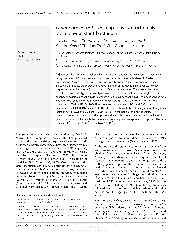摘要
A Gram-positive, non-motile, spherical, red-pigmented and facultatively anaerobic bacterium, designated strain I-0(T), was isolated from a sand sample of the Gobi desert in Xinjiang Autonomous Region, China. Phylogenetic analysis based on 16S rRNA gene sequences indicated that this isolate represents a novel member of the genus Deinococcus, with low sequence similarities (<94 %) to recognized Deinococcus species. The major cellular fatty acids were C(16:1) omega 7c and C(16:0). Its polar lipid profile contained several unidentified glycolipids, phosphoglycolipids, phospholipids, pigments and an aminophospholipid. The peptidoglycan type was Orn-Gly(2) (A3 beta) and the predominant respiratory quinone was MK-8. The DNA G + C content was 65.4 mol%. DNA-DNA relatedness between strain I-0(T) and Deinococcus radiodurans ACCC 10492(T) was 37 %. The strain was shown to be extremely resistant to gamma radiation (> 15 kGy) and UV light (>600 J m(-2)). On the basis of the phylogenetic, chemotaxonomic and phenotypic data presented, strain I-0(T) represents a novel species of the genus Deinococcus, for which the name Deinococcus gobiensis sp. nov. is proposed. The type strain is I-0(T) (=DSM 21396(T) =CGMCC 1.7299(T)).
